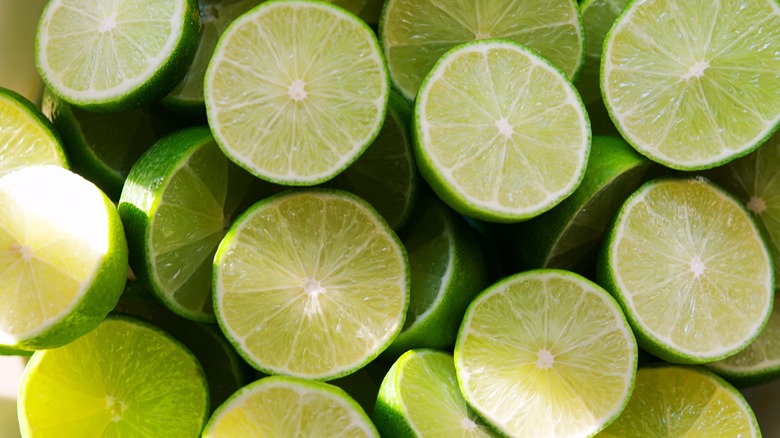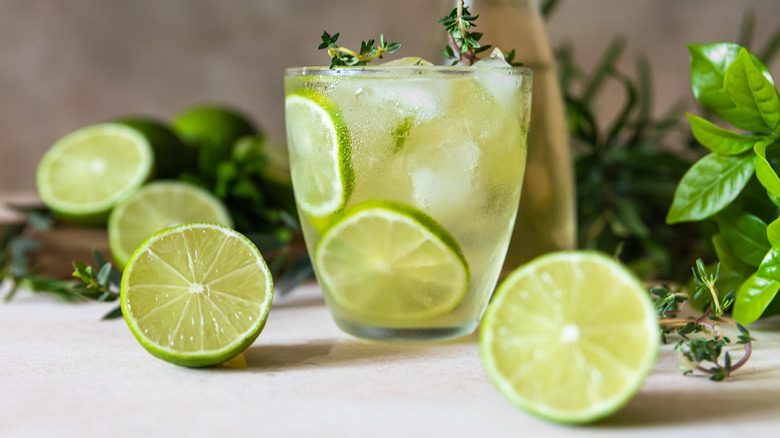How To Pick Out The Best Limes From The Grocery Store (And Why It's All About The Color)
There are over 100 different types of citrus fruits, per the Leafy Place, and limes are some of the most well-known ones. Limes are popular for several reasons, namely their versatility. These citrus fruits can be used to make salad dressings, add flavor to alcoholic beverages, and even work as cleaning agents. In addition to their many uses, limes also provide various health benefits. According to Healthline, they are great sources of vitamin C and antioxidants, helping them boost immunity and lower the risk of heart disease.
There are more than 20 different types of limes, per US Citrus, including Persian limes, Mexican limes, and Kaffir limes. Each lime variety offers varying levels of acidity, but if you don't pick a good one, regardless of the type, you won't be able to enjoy its delicious tartness. With this being said, what are some factors that go into picking the best limes from the grocery store?
Examine the color of the fruit
When people think of limes, they usually picture a bright green fruit. While this vibrant green color is an accurate description, limes can actually be a few different hues, most notably yellow and different shades of green. According to Garden.eco, green signifies that limes are unripe, while yellow signals that it's in the final stages of ripening. Knowing the characteristics that each color indicates is a crucial part of selecting the best limes from the store.
Generally, pale green, almost yellow limes are the best limes to choose from. Twisted Citrus reports that pale green limes have a higher liquid content, making them better for juicing than their dark green counterparts. Pale limes are also sweeter than darker limes, as the maturing process allows for the development of natural sugars. Not only is the color of this fruit important; its texture is as well. US Citrus reports that limes with bumpy, thick skin, such as Kaffir limes, don't contain that much juice. Conversely, limes with smooth, thin skin, like Mexican limes, have a good amount of juice. So, thin-skinned limes are definitely the best option if you use lime juice for baking or cooking.
Uses for different types of limes
As established, thin-skinned limes are the best choice for juicing, but this doesn't mean that thick-skinned limes don't serve any purpose. According to the Great British Chefs, Kaffir limes–which, again, are known for their bumpy exterior–are often used for their leaves. The leaves harbor a zesty flavor that is perfect for flavoring dishes like stir-fries, curries, and custards.
A unique lime variety is the Australian finger lime. Finger limes don't necessarily have a thick exterior, but they're not really known for their juice content. This lime's texture is somewhat smooth and leathery, and it contains small, circular pearls on the inside, via Fruit Salad Trees, which many compare to caviar. Though finger limes aren't the best for juicing, they make a delicious garnish for desserts or cocktails, per US Citrus. However, if you do need lime juice for a Key lime pie or another dish, remember to select pale, thin-skinned limes.


